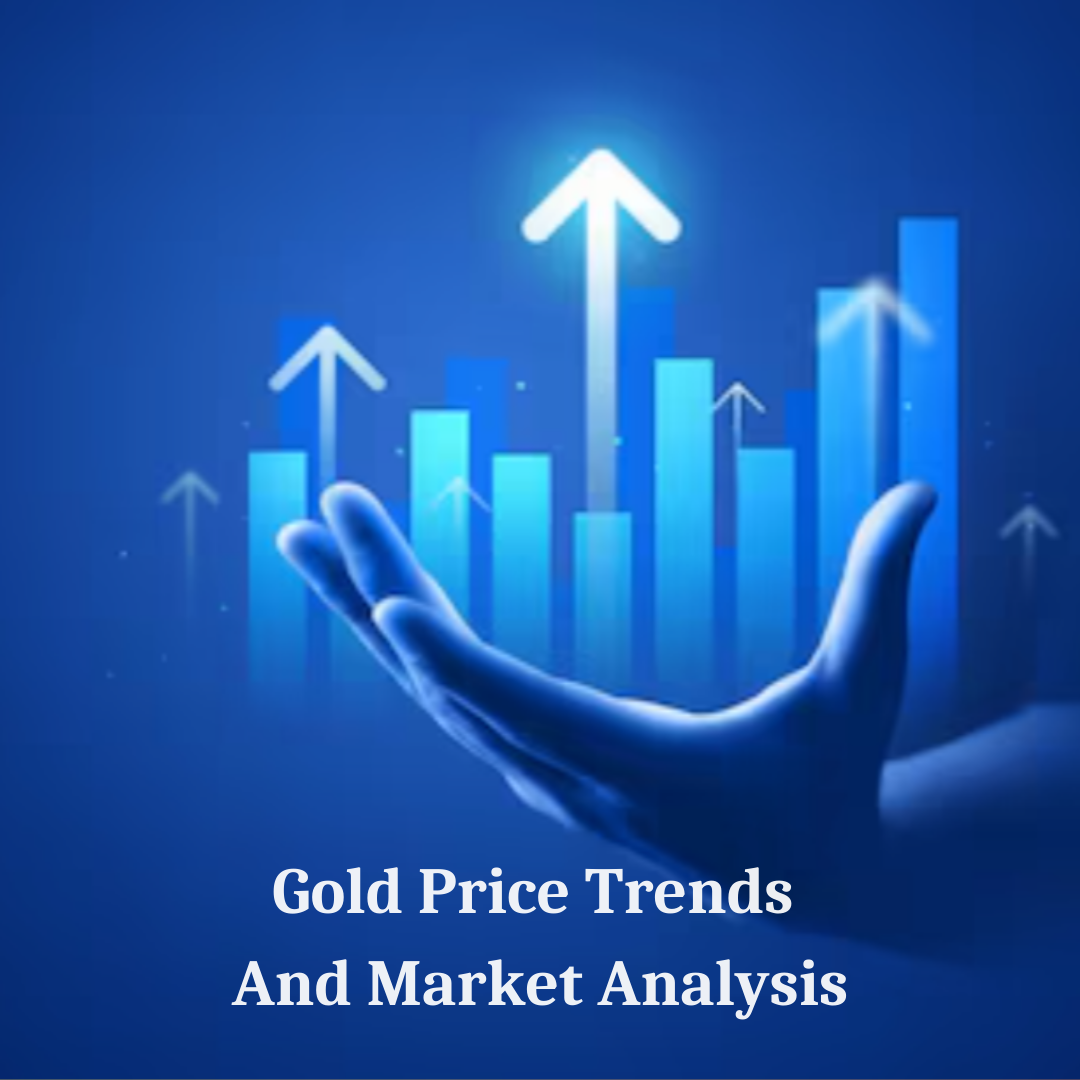Gold has always been more than just a precious metal—it’s a global financial barometer, a store of value, and a strategic commodity. Whether you’re a jewelry manufacturer, an investor, or part of an industrial supply chain, understanding gold price movements is critical to making informed decisions. That’s where a comprehensive gold price trend analysis comes into play.
This article explores gold’s recent and upcoming price behavior, demand-supply dynamics, major global suppliers, and key factors influencing the market. We’ll cover quarterly gold price trend through 2024 and into mid-2025, providing a region-specific breakdown including the USA, China, India, Germany, UAE, and Brazil. Whether you’re planning procurement strategies or tracking market opportunities, this analysis delivers actionable insights grounded in real-world market shifts. To get a 30-day free trial, you need to submit your query and enter ’30-day free trial’ when submitting the details below.
👉 👉 👉 Please Submit Your Query for Gold Price Trend, forecast and market analysis: https://www.price-watch.ai/contact/
Gold Market CAGR and Growth Forecast
The global gold market is projected to grow at a CAGR of 5.7% from 2025 through 2030. This steady growth is fueled by a combination of rising investment demand, central bank purchases, and ongoing use in sectors like jewelry, electronics, and dentistry.
Emerging economies such as India and China continue to lead the charge in consumer demand, particularly for ornaments and investment-grade bullion. Meanwhile, advanced economies are bolstering their gold reserves, treating the metal as a hedge against inflation and geopolitical uncertainty.
Gold Price Trend Analysis
Q1 2024
- United States: Gold averaged USD 2,030 per ounce due to recession fears and steady interest from institutional investors. Economic uncertainty pushed safe-haven buying.
- China: Prices were around USD 2,025 per ounce as local demand increased ahead of Lunar New Year festivities, paired with ongoing reserve accumulation by the government.
- India: With strong wedding season demand, Indian gold prices hovered near USD 2,050 per ounce, also affected by a depreciating rupee which made imports costlier.
- Germany: Gold prices in Germany averaged USD 2,040 per ounce, boosted by Eurozone inflation and demand for physical bars and coins.
- UAE: Averaging USD 2,020 per ounce, prices in the UAE followed global trends. Dubai’s gold souks experienced heightened retail activity.
- Brazil: Gold traded at around USD 2,010 per ounce, with moderate domestic demand and fluctuations driven by currency volatility.
Q2 2024
- United States: Prices dropped slightly to USD 1,980 per ounce as positive economic data reduced investor appetite for safe-haven assets.
- China: Gold remained firm at USD 2,000 per ounce amid strong central bank buying and geopolitical tensions in East Asia.
- India: Indian prices softened to USD 2,030 per ounce following the end of the wedding season and higher customs duties.
- Germany: Slight dip to USD 1,995 per ounce as inflationary pressure eased, though investment interest stayed intact.
- UAE: Prices averaged USD 1,990 per ounce, in sync with international benchmarks, with tourist demand remaining stable.
- Brazil: Gold steadied at USD 1,985 per ounce, with local investors turning to gold as a shield against inflation.
Q3 2024
- United States: Prices bounced back to USD 2,010 per ounce due to geopolitical tensions and weakening USD index.
- China: Continued government buying and low interest rates kept prices firm at USD 2,020 per ounce.
- India: Gold rose to USD 2,040 per ounce, spurred by renewed festival-season demand.
- Germany: Prices rebounded to USD 2,015 per ounce as gold remained a preferred hedge against uncertain bond yields.
- UAE: Increased demand from tourists and residents lifted prices to USD 2,010 per ounce.
- Brazil: Gold prices climbed to USD 2,000 per ounce, supported by a weak real and higher import costs.
Q4 2024
- United States: The year closed with gold at USD 2,060 per ounce, influenced by mixed economic indicators and upcoming U.S. elections.
- China: Gold stayed strong at USD 2,050 per ounce, with sustained demand from both retail and institutional buyers.
- India: Festive and wedding season demand pushed prices to USD 2,080 per ounce.
- Germany: Year-end buying pushed prices to USD 2,045 per ounce, making gold an asset of choice in wealth preservation.
- UAE: Prices reached USD 2,030 per ounce, spurred by gifting season and stable demand.
- Brazil: Prices moved to USD 2,025 per ounce, reflecting global trends and local investor confidence.
Q1 2025
- United States: Prices corrected slightly to USD 2,030 per ounce, influenced by stronger-than-expected job reports.
- China: Gold held steady at USD 2,060 per ounce, supported by strategic reserve buying.
- India: Prices dropped to USD 2,050 per ounce post-festive lull but remained high due to import costs.
- Germany: Gold stayed resilient at USD 2,035 per ounce, bolstered by ongoing economic uncertainty in the EU.
- UAE: Prices averaged USD 2,040 per ounce, reflecting international cues and stable demand.
- Brazil: Gold traded at USD 2,015 per ounce, supported by currency pressures and inflation hedging.
Q2 2025
- United States: Gold is forecasted to rise slightly to USD 2,070 per ounce if inflation fears return mid-year.
- China: Prices may climb to USD 2,080 per ounce as domestic demand strengthens ahead of summer celebrations.
- India: Seasonal buying could push prices to USD 2,090 per ounce, especially if rupee weakens further.
- Germany: Gold may edge up to USD 2,060 per ounce due to lingering inflationary fears and safe-haven interest.
- UAE: With a possible rise to USD 2,065 per ounce, Dubai remains a key retail and wholesale hub.
- Brazil: Expected to stabilize around USD 2,050 per ounce, as inflation control measures balance import pricing.
Gold Market Outlook and Demand-Supply Dynamics
The gold market outlook remains bullish, underpinned by strong investment flows, geopolitical instability, and diversified industrial applications. Demand from central banks and ETFs is expected to remain high, while physical gold demand continues to rise in Asia and the Middle East.
On the supply side, global gold production is expected to remain flat or slightly increase. However, rising extraction costs, regulatory challenges, and environmental concerns may constrain output in some regions.
Key Influential Factors Impacting Gold Prices
- Monetary Policy: Interest rate decisions by the U.S. Federal Reserve and other central banks directly affect gold prices.
- Inflation: As an inflation hedge, gold tends to rise when consumer prices are surging globally.
- Currency Fluctuations: A weaker U.S. dollar generally boosts gold prices by making it cheaper for other currency holders.
- Geopolitical Events: Wars, elections, trade tensions, and global instability can rapidly drive safe-haven demand.
- Mining Costs: Labor strikes, energy costs, and environmental regulations can raise production costs, affecting supply and prices.
Top Gold Suppliers Across Regions
Barrick Gold (Canada) is one of the world’s largest gold producers, operating in the Americas, Africa, and the Middle East. It benefits from large-scale, low-cost mining operations.
Newmont Corporation (USA) holds significant reserves in North and South America, Australia, and Africa. It is known for its sustainable mining practices and consistent output.
AngloGold Ashanti (South Africa) is a major African producer with operations extending into South America and Australia.
Polyus Gold (Russia) is the top gold producer in Russia, with vast reserves and large-scale mining capacity.
Zijin Mining (China) leads in Asia with growing global influence, including recent acquisitions in Latin America and Africa.
Gold Fields (South Africa) and Kinross Gold (Canada) are also significant players with widespread global operations.
Navoi Mining (Uzbekistan) and Yamana Gold (Argentina) serve the Central Asian and South American markets, respectively.
Saudi Arabian Mining Company (Ma’aden) is rapidly emerging in the Middle East gold sector with heavy investments in domestic extraction.
Regional Overview of the Gold Market
Asia-Pacific
China and India dominate consumption, primarily through jewelry and investment. China also remains a leading producer. The region’s demand typically surges during local festivals and wedding seasons.
Europe
Germany, Switzerland, and the UK are key investment and refining hubs. Gold is used primarily for investment, hedging, and luxury goods.
North America
The U.S. and Canada are top producers and consumers, with institutional demand driving price movement. The region also hosts major refining and trading hubs.
Latin America
Brazil, Peru, and Chile are significant mining regions. However, political and environmental concerns affect output and investor confidence.
Middle East & Africa
The Middle East shows high retail and investment demand, especially from the UAE and Saudi Arabia. Africa continues to be a major mining zone but faces operational and political challenges.
Mid-Year Market Snapshot
Mid-2024 saw an unexpected gold price surge of nearly 4% due to escalating Middle East tensions and slowing global GDP forecasts. Central banks increased their gold reserves, and retail investors returned to physical gold as equity markets wobbled. These developments underscore how quickly global gold prices can pivot on short-term macroeconomic signals.
Final Words
This gold price trend analysis reveals how diverse regional and global factors—from central bank policies to geopolitical events—shape gold’s trajectory. From Q1 2024 to Q2 2025, gold prices have fluctuated in response to real-time macroeconomic shifts, especially in the U.S., China, and India.
For manufacturers, traders, and procurement teams, tracking these trends offers a competitive edge. By understanding gold price trend analysis across quarters and regions, stakeholders can better manage cost risks, improve timing for purchases, and hedge against global economic uncertainty. As gold continues to play a crucial role in both commerce and investment, staying informed is not just strategic—it’s essential.
Also Read: Epichlorohydrin Price Trend Analysis: Forecast, Demand, Supply & Top Global Suppliers 2025

